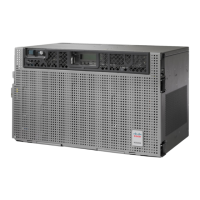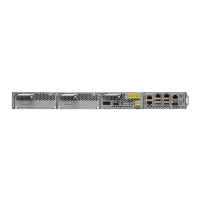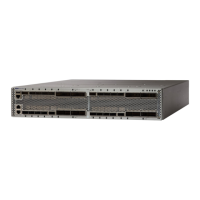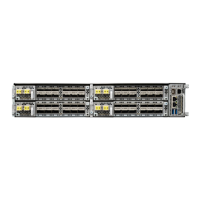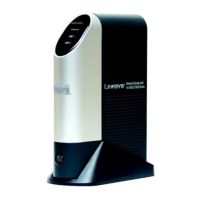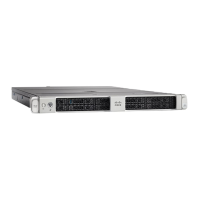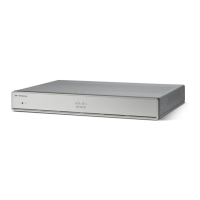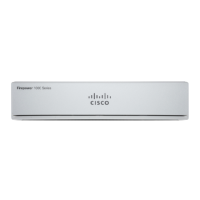4. If the continuity is good, clean the fiber according to site practice. If none exists, complete the fiber
cleaning procedure in the Manage the Node document.
5. If the signal is valid, ensure that the transmit and receive outputs from the patch panel to your equipment
are properly connected (that is, the correct wavelength is coming from the patch panel). For more
information about fiber connections and terminations, refer to the Turn Up a Node chapter.
6. If the correct port is in service but the alarm has not cleared, use an optical test set to confirm that a valid
signal exists on the input port of the alarmed TXP. For specific procedures to use the test set equipment,
consult the manufacturer. Test the line as close to the receiving card as possible.
7. If the alarm does not clear, complete the Physically Replace a Card, on page 453 procedure for the reporting
card.
DETAILED STEPS
Step 1 Check for any upstream equipment failures:
• Verify that the far-end TXP or MXP is generating the signal to be received by the alarmed card.
• Verify that the Trunk-Tx port is not reporting any performance monitoring (PM) problems.
• Verify that the Client-Rx port is not reporting any PM problems that could cause the CARLOSS in this card.
Step 2 If there is no cause upstream, verify cabling continuity from the transmitting port of the DWDM card ( 32DMX, or
40DMX) connected to the TXP receiving port reporting this alarm.
Step 3 If a patch panel is used, ensure that the LC-LC adapter managing the connection is in good working order.
Step 4 If the continuity is good, clean the fiber according to site practice. If none exists, complete the fiber cleaning procedure
in the Manage the Node document.
Step 5 If the signal is valid, ensure that the transmit and receive outputs from the patch panel to your equipment are properly
connected (that is, the correct wavelength is coming from the patch panel). For more information about fiber connections
and terminations, refer to the Turn Up a Node chapter.
Step 6 If the correct port is in service but the alarm has not cleared, use an optical test set to confirm that a valid signal exists
on the input port of the alarmed TXP. For specific procedures to use the test set equipment, consult the manufacturer.
Test the line as close to the receiving card as possible.
Step 7 If the alarm does not clear, complete the Physically Replace a Card, on page 453 procedure for the reporting card.
High-performance devices on this card can get hot during operation. To remove the card, hold it by the
faceplate and bottom edge. Allow the card to cool before touching any other part of it or before placing
it in an antistatic bag. Statement 201
Warning
If the alarm does not get cleared, you need to report a Service-Affecting (SA) problem. Log into the Technical Support
Website at http://www.cisco.com/c/en/us/support/index.html for more information or log into http://www.cisco.com/c/
en/us/support/web/tsd-cisco-worldwide-contacts.html to obtain a directory of toll-free Technical Support numbers for
your country.
CASETEMP-DEG
Default Severity: Minor (MN), Non-Service-Affecting (NSA)
Cisco NCS 2000 series Troubleshooting Guide, Release 11.0
152
Alarm Troubleshooting
CASETEMP-DEG
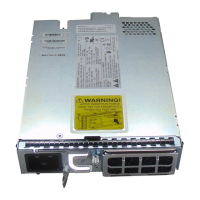
